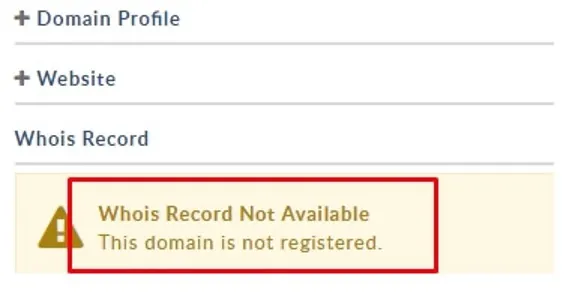How to Check the WHOIS Domain History for Free Before Purchasing Your Domain


Just because the domain name you’ve chosen for your website is free, doesn’t mean you are the domain’s first owner. By checking the history of a domain name, you can find out the WHOIS history (its previous owners), reputation and whether the website has faced previous sanctions from search engines.
A second-hand domain can play both a positive and a negative role when it comes to promoting your website. It is better to be on the safe side, and check the domain history in advance with the help of special free services (that we will discuss in this article).
Why is checking the history of a domain name so important?
The “dark past” of a domain can negatively impact its ability to attract traffic from search engines. For example, if said domain used to be linked to a blog with a dubious reputation, filtered or even banned by search engines, all these factors will have a negative impact on both the website as well as the new owner’s own reputation. In addition to problems with indexing, the so-called dark past of a domain name can adversely affect you or your company will be perceived by new users.
The same goes for buying a website: if you buy a website, first, check its domain.
A second-hand domain should be discarded if any of the following apply:
- It traded spam links;
- It used a doorway page
- The domain was supplemented with non-unique or overly optimized content;
- It promoted violence or racial discrimination;
- The domain consisted of a different topic from its current resource.

Of course, not all domains have a dark past. In fact, some domains enjoy an elevated level of trust within search engines, a clean reputation, and many years of experience. Sometimes, these sorts of projects closed due to the owner’s lack of time, or simply because at some point, the administrator forgot to pay for the service.
However, if the domain was passed down into the hands of several owners who decided not to renew it, there must be an apparent reason to abstain from buying it.
Ways to find out the domain’s history
Now, we will address the key point of this article: gathering information about your domain of choice.
Known as the ‘Wayback Machine’, this service allows the user to ‘go back in time’ and see the years of a website’s activity as well as screenshots of its appearance. The advantages of the service include support for absolutely all domains from different zones and ease of use.
To get started, go to the service, enter the name of the website you would like to know more about, and press enter. If the archived resource has an accessible history, it will be shown as a graph of activity on the provided scale.

Below the graph, you’ll find a calendar where some dates are marked in blue and green – you can view the savings for these days. This makes it is easy to check whether the domain name was previously used, whether the site violated any Internet norms that could lead to a ban, or if it may have had a bad reputation.

A word of warning: the website with your domain may simply be missing from the archive, so it’s always better to play it safe and use an additional service to double-check.
The principle of the operation is as follows: the user goes to the main page of the platform and enters the domain name.If the response shows an empty table with the Whois Record Not Available label, then, congratulations: the domain is clean and good to use.
How to choose the perfect domain name for your art website Read More .ART Domain Name: Your Digital Business Card Read More How to register a business email on .ART Read More

If you see a lot of filled-in graphs, it means that the site name has a history. To learn more, click on the arrow next to the Dates bar.

The screenshot shows that the domain bbc.com has had at least 616 significant changes., with the oldest record being over 20 years old.

When should I buy a domain with a history?
Buying a second-hand domain is justified if it:
- does not have a history of being banned
- had a similar theme to your project.
- was never really promoted.
- receives a small amount of organic traffic.
- has been around for a considerable period of time.
- has a memorable name with a keyword.
- does not spam with links.
These types of websites are likely to collect low-frequency traffic faster. They can also earn income through partner programs or become a reference donor.





